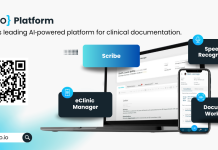James Lovegrove, Public Policy Director at Red Hat, explains how public sector IT embraced open source software – going from largely passive users, to active contributors
Confronted with reduced funding, economic uncertainty and grappling with legacy IT, European governments have been turning, year-on-year, to open source to modernise their IT operations. This strategy has allowed them to get value for taxpayers and offer best in class eGovernment solutions. However, the pandemic coupled with an unprecedented recovery stimulus package could have a lasting transformative impact on the public sector.
An evolving bedrock of regulatory and policy frameworks has ensured that government departments and public sector organisations are no longer passive users of technology. They are more self-sufficient, actively contributing to the development of new open standards and open source solutions, which can be improved and distributed across ministerial ‘fiefdoms’ and sovereign borders. They have achieved new levels of sustainability and autonomy due to the growing prevalence of open hybrid cloud which is helping to unlock the public sector’s full potential.
The pandemic tested the resolve of many businesses. Many were able to adapt quickly and create new flexible and secure infrastructures that facilitated remote working at scale, but there were some that struggled with the transition. Public sector organisations, on the other hand, can’t afford to fail. They’re responsible for the provision of essential services such as healthcare, education, social security and countless other areas of public administration and policy. Many services, like healthcare, have continued operating at full capacity, while also adding new digital capabilities such as track and trace.
Recognising the importance of digital technologies, the EU will dedicate at least 20 percent of its €750 billion stimulus package to digital services and infrastructure across multiple verticals, including the public sector. This investment will stimulate the development of open and inclusive eGovernment infrastructures and services that will cater for the needs of public services, civic society and businesses for many years to come.
The Amplification Effect
Open source has been instrumental to public sector organisations’ implementation of open hybrid cloud and multi-cloud strategies to support modernisation and cultural change to address elevated political concerns of lock-in and portability. Collaboration is helping to drive digital health initiatives in one country, while also helping to deliver new services for a legal authority in another. A major public cloud programme is also underway that will completely change the face of public finance and investment in an EU member state. This entire process is built on open frameworks that enable public sector organisations to deploy hybrid cloud infrastructures and orchestrate containerised applications to create new digital platforms and services.
FIWARE is a shining example of this model. It is a cloud platform and a collaborative hub that provides the foundation for a diverse community of developers, cities and over 1,000 different SMEs and startups. Organisations that leverage the FIWARE platform regularly contribute to accelerating development in areas like eHealth, transport and energy, among others. It’s particularly effective in the acceleration of IoT development and has played a key role in consolidating smart city rollouts, which tend to suffer from administrative fragmentation.
Open source allows public sector organisations in the UK and across the EU to achieve their objectives by investing in each other and working together as a community. Many of them have already collaborated on projects and initiatives that have helped to advance key areas of administration and policy.
All this shared experience can be fed into current and future projects. It’s a template for success that perfectly demonstrates the value of the open source model that fosters collaboration between distributed communities in the public sector. There are many examples of teams coming across new solutions developed in other geographies that were quickly adopted for local purposes. This process in turn creates a much larger specialist community dedicated to developing new digital services for the public sector. All coming together to contribute to the development of code that can be adapted and hardened, to suit specific public sector requirements in the form of enterprise grade open source software.
The New Digital Disruptors
The focus on developing internal resources and driving cultural changes from within also has its fiscal advantages. Local, regional and central governments are able to make more informed investment decisions based on data and tangible outcomes. Public sector spending will always be scrutinised, and IT investment has tended to attract negative publicity due to the failure of high-profile outsourcing projects. However, both culture and mindset within the public sector have changed. Public sector IT teams are reducing their dependence on licensed software and proprietary technologies. Thanks to the adoption of open source technologies and methodologies they’ve been able to transform IT procurement into a more strategic resource. Enabling them to carefully select proprietary solutions that support and complement their existing frameworks, while they continue to develop their own cloud-native capabilities to support sustainable programmes and drive innovation.
Open source is enabling IT teams to align policy with organisational requirements, to deliver services that match the expectations of ministers, government officials and specifically the end users — citizens. Modernisation projects can now be run from the ‘bottom up’ rather than the ‘top down’, involving everyone with a vested interest in the outcome.
The principles of open source are not restricted to IT and developers, they extend to civil society, civil servants, policy and decision makers, to ensure a more holistic process that will directly benefit business and society. Expect to see public sector organisations make tremendous strides over the next few years as we see the impact of the EU’s stimulus package and the effects of similar investments here in the UK. They will emerge as digital disruptors, contributing directly to the creation of new solutions, new open standards and even new digital legislation.











